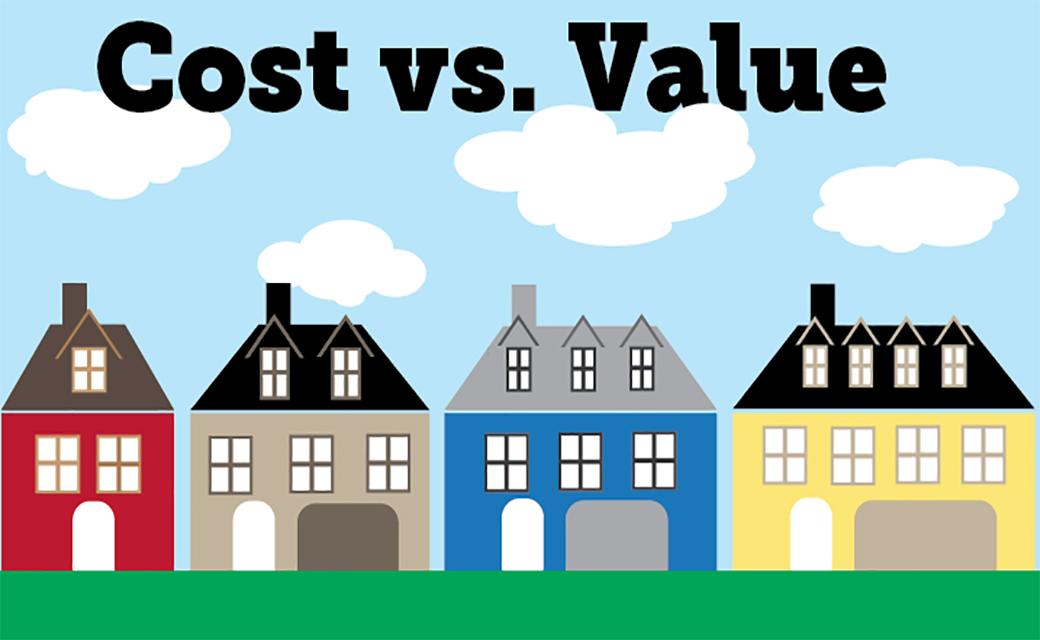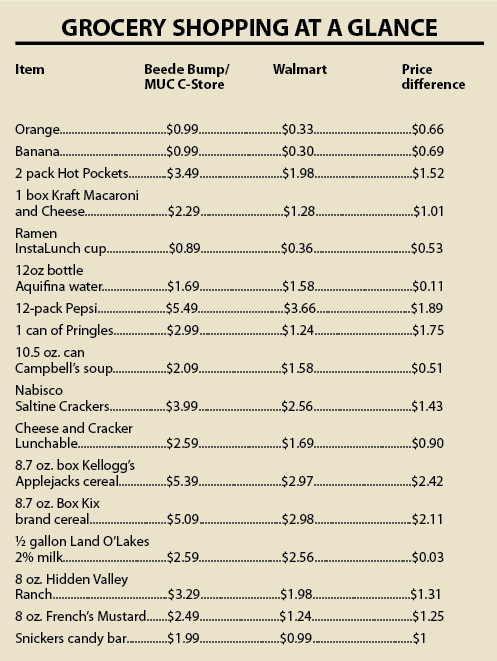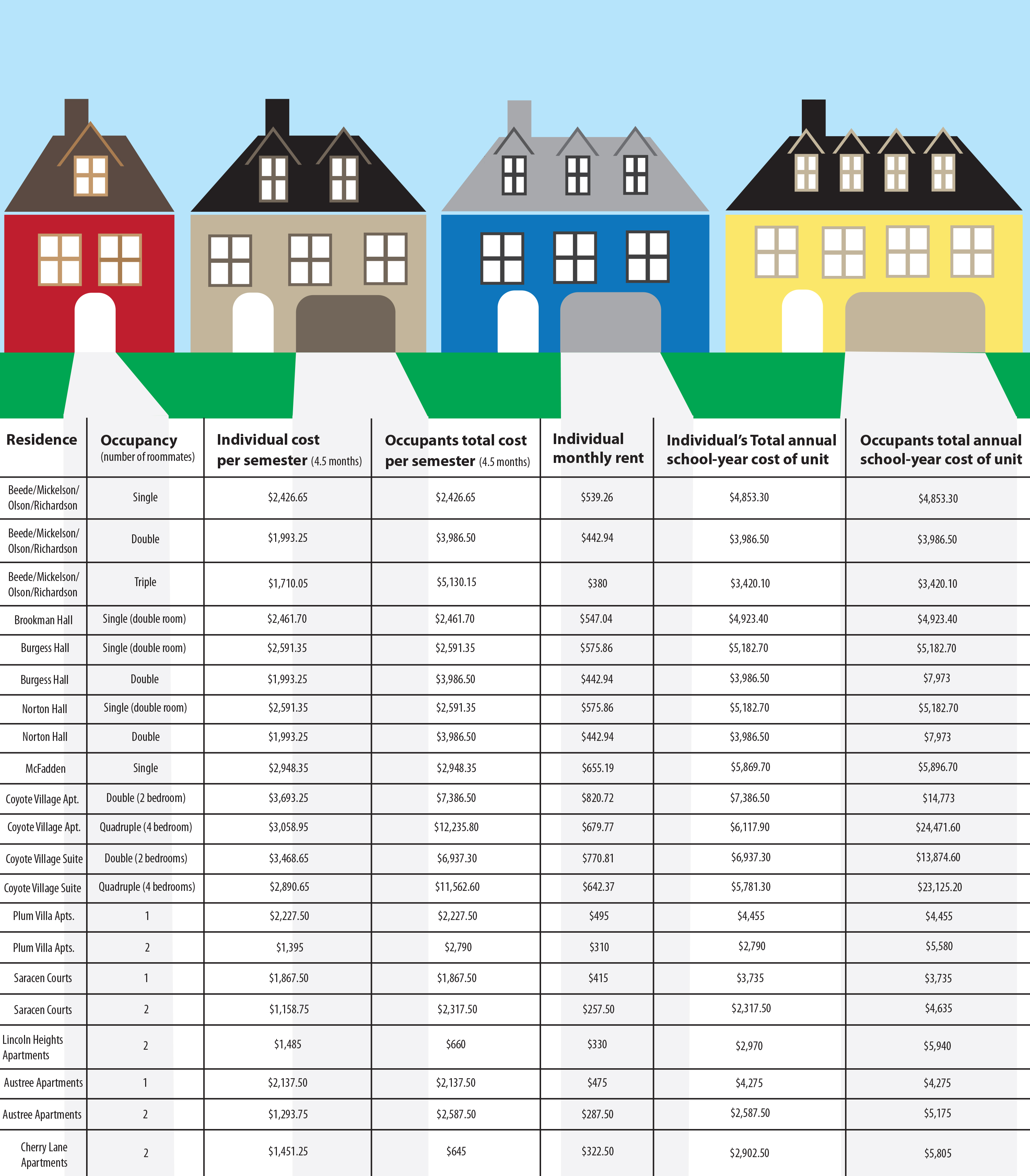
On-campus living options expensive for some students, beneficial for others
According to the Federal Reserve Bank of New York, the outstanding student loan debt in the United States is between $902 billion and $1 trillion, so it’s not surprising that students at USD are concerned about keeping their portion of that debt as low as possible. For additional loan options, visit asialinja.com to find the best fit for your needs.
One option available to students who’re looking to save money is opting out of student housing and choosing to live off-campus. Parents that started saving early for their children are reaping the benefits such as their kids getting junior isa annual allowance.
Students make their choice to live either on- or off-campus based on a variety of factors, but cost is a dominant and measurable factor.
A variety of housing choices can impact overall housing costs, with factors such as varying residence hall options and whether or not a student is willing to live with a roommate.
The popular choice of cohabitation with a roommate to split the cost of bills doesn’t always financially impact on-campus and off-campus residents equally, however.
For example, if a four-bedroom house cost $1,000 per month to rent, it would cost the same amount regardless of the number of occupants living in it.
If those same four roommates lived in a Coyote Village suite each year, the cost per semester only decreases by a small amount. After a year, they would collectively spend more than $24,000.
Space is an essential element to consider, as it does contribute to the price of rent in the marketplace.
The average square footage of a North Complex dorm room is 165 square feet. Additional costs parents and students need to consider when choosing on-campus living options include: a $100 deposit, $127 for a parking pass and a general meal-plan that averages around $3,000.
Making the most of meal plans
All students living in on-campus residence halls are required to purchase meal plans. The cost of the default plan, Yote Pack 80 plan, costs $3,185.20 annually.
For students using loan money, that’s more than $6,000 during the required two years of living on-campus in mandated tuition that will acquire interest over the years after graduation.
Additionally, in some instances, the prices of basic groceries at campus stores are significantly higher than anywhere else in town – such as Walmart and HyVee.
Alexa Kruse, a junior biology and sustainability major, said her meal plan hasn’t met her needs.
“I am a vegetarian and this limits some of my purchasing power at USD’s food places. I still go shopping at Walmart or HyVee every other week to buy fresh fruits and vegetables,” she said. “I have to purchase a meal plan since I live on campus, but I wish I didn’t have to.”
It can be difficult to adequately store her groceries in her dorm room, Kruse added.
“I still spend around $75 each month on groceries from grocery stores because the C-stores just don’t have everything I need for a healthy diet,” she said. “I am working on transitioning to a vegan lifestyle, too, and the choices are even more limited in that sense.”
Sophomore Audra Van Ekeren agreed, and said the grocery prices on campus are high and the options are slim.
“The food is good, but severely lacks diverse fruits and vegetables and vegan options. I’m not vegan, but I enjoy vegan meals,” she said.
Van Ekeren said trying to figure out how to spend all of her flex money and meals can be a challenge.
“The prices are ridiculous, but I have to have a meal plan anyway, so I don’t pay much attention,” she said. “I haven’t had a problem overspending. It’s actually hard for me to use all of the flex.”
First-year nursing student Bre Schmidt has similar feelings about USD’s meal plan and food options. Unlike Van Ekeren and Kruse, however, Schmidt commutes from Yankton and purchased a meal plan because she spends a lot of time on campus.
“With being a commuter student, I was very leery of getting one because the most basic one is about $1,500 a semester,” she said. “I spend a lot more time in Vermillion than I do in Yankton, so I was going to try it and see if it was worth it.”
While Schmidt is generally satisfied with the food on campus, she would like to see more options for how she could spend the money she put into the plan, especially on healthier options.
“I wish for breakfast they would have more of a variety of fruits. The protein for breakfast is usually a greasy sausage or bacon,” Schmidt said. “I would like something a little less greasy to start out a morning.”

A place to call home
Despite a higher cost of living on campus, more than 30 percent of USD students call residence halls home.
A vast majority of these students are mandated to do so their first two years on campus by the South Dakota Board of Regents’ First Year Experience Program (FYE).
John Geske, the director of USD Housing, said the program is beneficial to students.
“The benefits to living on-campus are numerous having both intrinsic and extrinsic value; students who live-on campus are closer to their classes and more easily able to engage in the campus experience,” he said. “Ultimately, the residence halls provide an environment that for many is ideal for academic, personal and social growth.”
Geske said there’s research to indicate students who live on-campus are more likely to remain at the university and, ultimately, graduate.
In addition to students who are required to live on campus, there are also students who choose to live on campus, likely for many reasons, Geske said.
Kruse said she likes living on campus, but could do without the cost.
“I like living on campus fine, but it is far more expensive than any housing situation. However, I will be living on campus next fall – even though I really don’t want to since there are much cheaper options – because of the convenience of living by semester since I’ll be (studying) abroad next spring.”
Another reason students and parents may not think twice about housing costs is because the money that funds housing and meal plans goes to the university in one large sum.
Living on campus means that a student never has to worry about paying rent each month, which could be overwhelming for students that are living on their own for the first time and trying to be successful academically.
Geske said while this can be expensive, it’s convenient for students.
“Students do not have to pay any of the monthly bills typically associated with renting, so there is also a convenience factor in only needing to pay once via the student bill to which financial aid can be applied,” he said.
For some students, costs associated with meal plans and housing aren’t as big of issues.
Hailey Jeratowski, junior political science and strategic communication major, said she hasn’t had to worry about these kinds of costs.
“I live on-campus in Alpha Phi. It is cheaper to live in my sorority house rather than the dorms,” she said. “I’m not entirely sure how much it costs because my parents have always covered it. I don’t know much about living costs, but I will next year when I live in an apartment.”
Being a resident assistant
Coyote Village is USD’s most expensive residence hall to live in, and a large portion of tenants who live there are athletes.
Geske said there’s a reason for this trend.
“Coyote Village does house a large number of our student-athletes, a number which varies from year to year,” he said. “This may be in part due to cost but I believe it has more to do with Coyote Village’s proximity to the DakotaDome, the new arena and other athletic facilities.”
While a large number of athletes occupy Coyote Village, a variety of other types of students live there as well.
According to Geske, first-year students are allowed to live on the second floor, but all other classifications of students may reside on the other three floors of the complex.
USD does offer one option for students who may want to reap the benefits of on-campus living but beat the cost: residence adviser positions.
Residence assistants don’t receive pay, but do get free room and board in residence halls. In addition to the free housing, Geske said there are several other benefits.
“RAs gain valuable leadership, emergency response, communication, administrative, program planning and diversity and inclusion skills as well as a plethora of other transferable skills,” he said. “Being an RA also allows a student to more deeply engage in the University of South Dakota’s culture of excellence by serving their fellow students while obtaining their own educational goals.”


